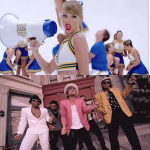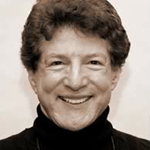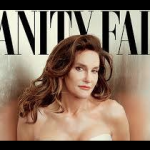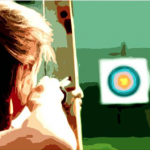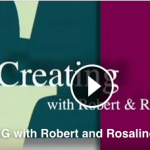This August, from the 9th to the 13th, I am leading a workshop titled THE ART OF THE CREATIVE PROCESS. This will be at the famous Kripalu Center in Stockbridge Massachusetts in the beauty of the Berkshires. This is the second time I’m leading this workshop at Kripalu, and, mostly likely, the last time because of my schedule. So, if you are an artist, and want to take The Art of the Creative Process, this may be your only chance. Last year it was one of the highlights of my year, great students, great class, fantastic results, and great friendships that we all formed.
I wanted to lead this workshop because there have been countless principles I’ve developed over the years that, in many ways, I think of as great secrets of the creative process, first as applied to the making of various forms of art, and secondly, as applied to how one can create the life he or she wants to live. I love working with other artists, and love to share a good thing.
I have a BM and MM in composition from the Boston Conservatory of Music. It was a fantastic educational experience. But there is a difference between what I learned as a student, and, later, learned in professional life. Sometimes, even now, there will be something I “discover” that was taught to me by one of my great teachers way back then. And I find myself saying, “Oh, that’s what they meant!” And there is a well-considered pride one can take in being a true professional. Amateurs can do it when they are in the mood, or in the “zone,” or under some spell or other. But professionals can make it happen no matter what the circumstances. Therefore, to be a professional, one needs a reliable creative process.
This is one reason I so admire the work of Constantin Stanislavski and Lee Strasberg. The methods they developed had the purpose of developing a reliable creative process for actors. And while there is often controversy about this or that approach to acting, that isn’t the point. Before Stanislavski, there was, what was called, the trick of the muse. The artist had to rely on inspiration hitting just at the right time. The muse could not be relied on. Strasberg writes in his book A Dream Of Passion, that one night he was impressed by the performance of an actor on Broadway. The next night he brought many of his friends to the theater only to be disappointed by the very same actor. He was told, “That is the actor’s problem. The muse may or may not be with you.” Then Stanislavski’s Moscow Art Theater came to New York. Strasberg came night after night, and night after night every actor was superb from the leading roles to the minor roles. That is was the start of his experiments in acting techniques, all with the goal of a reliable creative process.
That has been my quest as well, although I have approached it structurally. That was a natural path for me because of my compositional background.
There comes a point, and most artists often come to this point, that your vision and aesthetic aspiration far outpaces your ability, capacity, instinct, or technique. Those are golden moments. They can be frustrating as hell. But they usually are exhilarating because something new is about to be born, something that you hadn’t considered, something that may be so simple that you scratch your head and say to yourself, “Why didn’t I think of that before?” Or, it may be something not obvious, and you think, “Wow!”
The creative process is not the same subject as “creativity.” When I wrote my book Creating, I was booked for a lot of conferences on “creativity.” I found little in common with those who talked and wrote about it. First of all, most of them were not from the arts, didn’t create anything other than books on creativity, and had little understanding of what it takes to produce high quality work within a deadline and budget. They didn’t understand structure, counterpoint, contrasts, tension-resolutions systems, color balances, value studies, poetry, song structure, etc. Mostly they came from the field of psychology, or neuroscience. They never had to get a painting to work, or build momentum in act 2, or develop a theme throughout a symphony. They reminded me of people who may witness something going on before their eyes, but not understand what it takes to produce it themselves. A little like a music critic watching Glen Gould play Bach. He can’t quite tell how he is doing it, and certainly can’t do it himself. So, in light of not knowing, it is easy to invent theories about how it works. There is no shortage of theories in the creativity business.
Creativity is concerned with producing the unusual. The creative process is concerned with producing the artist’s vision, usual or unusual. As a process, it is consistent, predictable, reliable, practical, and productive. It is a process for professionals who know what they are doing and, from that, have track records. This is so different from what the creativity people appreciate. One of the major differences between the two fields is this: Freeing the mind Vs Focusing the mind.
Creativity people think that we were all so creative as children because we were non-judgmental and imaginative. This is the glorification of childhood creativity. But, let’s state the obvious; children are not as creative as adults. Most children do not build buildings, or create great films, or write symphonies (with the exception of Mozart and Mendelssohn, both of whom became more accomplished when they got older,) or create software, and so on. Creativity people think that if we got out of our own way, free-associate, generate lots of ideas, and think laterally, we’d be very creative. Professional creators don’t use any of these techniques. Instead, they use structural tension, focusing the mind on the desired outcome and the current reality as it relates to the outcome. This focus gives the mind a job, to generate a path from the starting point to the accomplishment of the goal. If you can’t get there conventional ways, the mind, creative as it is, will invent new ways to get to the goal. That is the real foundation for creativity. But, for the artist, creativity is never an end unto itself, but a process toward an artistic results.
Artists know about the creative process because that is their stock-in-trade. Too few write about it, and when they do, it is always worth reading. One of my favorites is Twyla Tharp’s The Creative Habit. Another is Bob Dylan’s Chronicles. One of the best documentaries on music is Paul Simons Graceland, where Simon discusses just how he made such an incredible album. On Writing by Steven King is excellent.
Artists are told by non-artists what their job is. They are supposed to have social purpose, or be political, or be showing something about humanity, or carry a message. It is important that each artist find his or her own way, and reject the opinion of those who do not create. Too often, the artist becomes confused about direction, meaning, purpose, and reason to create art in the first place. To often, the artist tries to be too many things to too many people, loosing what we could think of as an artistic compass.
Also, too often, artists get into ruts with themselves. This is NOT creative block as it has been described. Instead, it is this simple, they are bored with themselves. They have done what they know how to do, and now, they have become stale, unable to move ahead. These moments challenge the artist to do something different. This is the time for experimentation, throwing out all the usual techniques, rethinking the approach and orientation, and finding a new, fresh way to create something different than before. These moments are golden for the artist to reinvent him or herself as a creator. Almost always something good comes out of these moments.
Creating is a skill, and it is an orientation, and a way of thinking, and a way of approaching life, and, for some, a calling. It is not raw talent as evidenced by many talented people who never developed their skill. Mastery of the creative process happens over years of experience in which you grow, develop, learn, and deepen your understanding of just what it is you are doing. And it happens to be one of the very best things in the world.
To find out more about The Art of the Creative Process:
http://kripalu.org/presenter/V0008511/robert_fritz
 Someone once said about a very talented person, “He has many talents but one: the talent of using his talents.” There is much insight in this remark. It is not the talent, abilities, skills, intelligence, nor experience you have that matters. It is the ability to put it all together. And that takes discipline.
Someone once said about a very talented person, “He has many talents but one: the talent of using his talents.” There is much insight in this remark. It is not the talent, abilities, skills, intelligence, nor experience you have that matters. It is the ability to put it all together. And that takes discipline.
